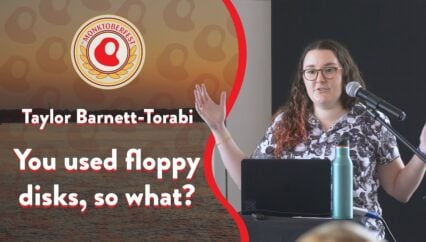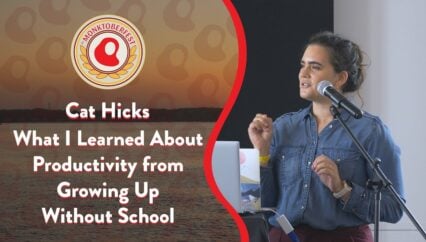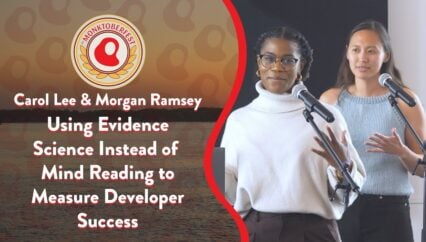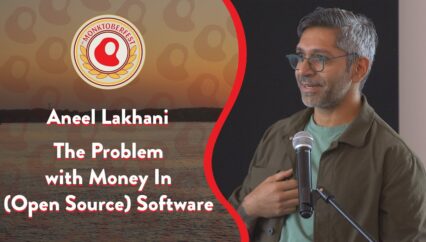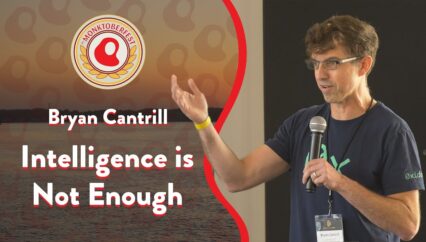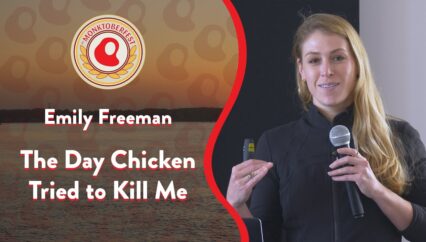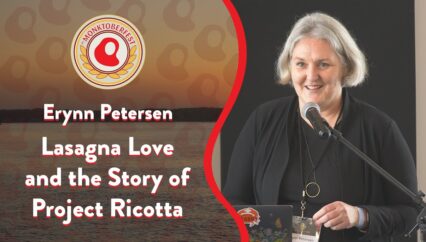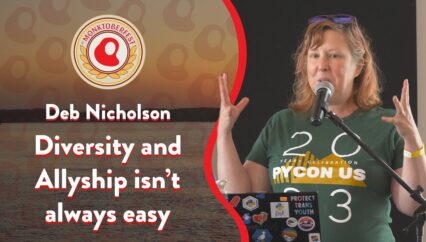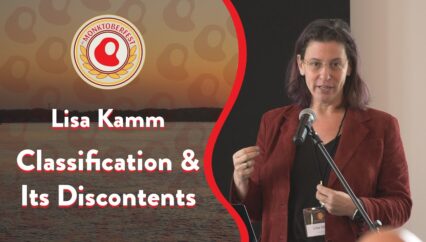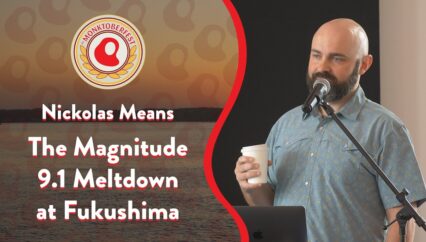Technologists founding companies often focus on technology, products, co-founders, teams, customers, and markets, yet they frequently overlook the crucial aspect of building a good board of directors. This oversight can be significant since the board plays key roles, including hiring and firing the CEO. The board serves as an invaluable external brain for the CEO, offering insights and advice on critical areas not yet fully developed within the company. The presentation explores both the theory and practice of forming an effective board, drawing on experiences from founding roles at Sleepycat and Cloudera, and participation in various commercial and non-profit boards. This talk provides guidance on the deliberate and strategic formation of a board that can significantly impact a company’s direction and success.
Transcript
I’m a little bit alarmed to know that I have one room that I’m addressing. This talk actually began in an email message that I sent to the CEO of a climate tech company that I’m invested in. That guy had just gone out and raised a bunch of money and was confronted with the need to construct records and so he asked me for advice on how to do that. I wound up sharing the email with a couple of other companies that I’ve been working with. Tweaked it up a little bit. I pitched it to Steve as a topic for this conference and he agreed that I could do the talk.
Let me see what time it is right now. I want to make sure I stay on time.
I took that yes as an opportunity to turn my email into an novella. And I’m going to read that to you guys now. I will post the URL and the paper that it points to up here at the end of the talk, but in the meantime, you can just stare at me and not stare at the screen.
So I know that we all agonize over who’s going to be our co-founders. We really think hard about who we want to work with. Who we want to go through the maelstrom of creating a company. We look for talent, we look for skill, we look for chemistry.
Everybody I that I know is by contrast is remarkably passive about a Board of Directors. A lot of time, well, we took money from some venture firm and they assigned me someone and so I guess that person is going to be on my board. I think the reason that people don’t take this as a real serious responsibility is they don’t understand what a Board of Directors is for. So that is what I want to talk to you about today.
You hire a law firm, they ship you a big old stack of papers and you sign some of them. One of the documents in there is bylaws and they encode a local business code of whatever, state, city, you live in.
In the bylaws, without fail, there’s a requirement that you have a Board of Directors. And there are some responsibilities the board has, by law. Those include, generally, hiring and firing the CEO.
Setting the strategy-of-deciding what the business is going to go do, and making sure that it can go do that stuff and the main way they do that is by hiring and firing the CEO.
Board members are required to proceed tect share holder interests, they have a duty of care so they’re not stealing money from people who put money in the business for example.
And there are a bunch of government’s responsibilities, you’ve got to get audited periodically, you’ve got to meet regularly and keep notes and so on. Those are the legislative requirements. The-by-laws that govern a Board of Directors.
And they’re important. They’re real serious legal obligation in there. In fact, if you ever create a Board of Directors, one of the first things you should do is go buy directors and officers’ insurance. Your board members are personally at legal risk if bad things happen in the business and the D & O policy helps you pay for lawyers in the event that some of that transpires.
The papers are often toss in a drawer and not read very often, because face it, it’s hard work to start a business, you’re super-busy. You’ve got to come up with a product, you’ve got to find customers, close deals and plan finances and it’s hard. You’re super-busy doing day to day running the business.
The Board of Directors is also important there. Now, I said a little bit go, people are super-thoughtful about their cofounders and super-thoughtful about their leadership teams and that’s true. When you hire people onto your leadership team, you want smart folks who challenge your thinking and who you’ll want to be in the room with when stuff goes sideways, you want people who are going to help you come up with good ideas. If someone can’t do that, they don’t belong on your leadership team.
I reckon that a Board of Directors is really an adjunct leadership team. You want that same collection of skills, commitment, ability, in your board members. They should have the experience, they should have the background to dive in and help you when stuff goes sideways.
A good board member ought to be useful in the ordinary course of events, they ought to be able to contribute meaningfully in times of crisis.
So who should be on it? What type of people do you go after? Well, first of all, the CEO always has to have a board seem. I generally recommend to small companies that you also put one other insider, one other common share holder on the board. Usually it’s the cofounder or a member of your leadership team. Frankly it’s because when you’re really tiny and you have one outside board member who’s an investor, it’s nice to have two of you in the company to vote more than the other guy can vote. So you’ve got a little more control. Also, that is people recognize their contributions, make them feel like they’re part of the team.
So there’s two of you from inside the business. If you decide to raise money, it will certainly be the case that the investors will insist on a board. Not always true if you’re raising small amounts of angel money, but if you’re taking a significant amount of capital, the investors will want to see it. And if you raise a bunch of money and the investors don’t want to see, you have dumb investors.
Pete Lee had come up — he was going to go fund a company that commercialized that technology, made all that Google analytic power available to traditional enterprises. Given his conviction, given his deep desire to fund that, it made no sense for us to take his money. He had throughout through stuff, he really understood why we were going what we wanted to do. So he was an ideal series A investor. Not long after that, we got an inbound offer from a different venture firm to basically lead our B round. Now, we didn’t need the money at that point, but we thought we probably would need it in the next year or so.
So I talked to Ping, and he suggested that we run a quick process, go talk to maybe five or eight other venture firms, see if there was interest, get a marked price.
So we boxed the pitch deck, talked to a bunch of good companies but I fell widely in love with Annil, but a legendary operator, in the past he had cofounded and run Peoplesoft with Dave Duffy. And while he was a partner at greylock, his side hustle was that he had cofounded another company. This is a guy who can run stuff for real. He understood how to hire and fire. He knew who kind of problem CEOs had. I wanted him very badly on my board L. Board of Directors. Now, you’ve got to get the best economics you can get. We managed to put together a round from greylock that did that. It gave the shareholders the best deal that they could get, but most of all, from that point of view, I got anil on my board. Even if you don’t raise money, you still want good smart board members who can help you solve problems.
It’s pretty common for companies to bring on independent board members, so insiders, you and your cofounder, you’re not independent, you’re deep in the business. Investors, they’re not independent, they’ve got money riding on this thing, but someone from the industry or outside who is willing to sit on your board, doesn’t have money of their own in it, isn’t on your payroll, that is an independent board member and those folks are very useful. When I was at Sleepy Hat we brought on two independent board members. One was a guy I had served on a the board of a biotech with and he had helped me negotiate the sale of that business to a very big company. And the other is named Clyde. Clyde was the CEO of my largest customer.
I didn’t want to use his customer-tise, so I asked him to be on my board. Jot first one is what I Aneel, what I did with Clyde, has this person ever run a company before? Is going to be a source of really valuable advice to you. That person can tell you how to do your job, and particularly if you’re a technical person starting a company, you didn’t learn that stuff in school.
Finding someone who can be a mentor in that way is super-useful.
Just an anecdote on that point of mentorship, so Cloudera when we were very young was an absolute rocketship. Everybody knew that this Google stuff was magical. The company was growing way faster than anything I’d ever seen before. Sleeping Hat had been entirely bootstrapped. We didn’t take any outside capital. I had a crazy — I drove 90 minutes every day every day to get to and from work. On my way back and forth to home. I established a pattern of calling Aneel, and I would talk about whatever it was top of mind for me at that time. He would challenge me, present options, and talk out the possibilities with me. He made me a much better CEO. To the extent that Cloudera was a good company, it was largely due to the coaching that I got from Aneel was hugely helpful.
The second questions I think you ought to ask when you’re assessing potential board members, what connections do they have? Who can they introduce me to? you you oughta be able to get in front of partners, in front of customers. Board members ought to be able to help you find good executive hires, as well. Their Rolodexs ought to be able to pull people in that can be useful to the business.
Partners in a venture firm always can Troy you. So that’s usefuls, that’s cool. They can also, though, put you in front of groups of potential customers. So Greylock used to do these bus tours, they would get CEOs, bring them to Sandhill Road.
I got to get introduced to potential buyers and kick off evaluation processes very early on.
We also took some funding from Inkut, l those guys run a really great CEO summit in San José every year. Key leaders from different mission-focused organizations come to town, show up at a hotel downtown, they helped me wind up good meetings with people who needed the kind of analytical software that we were making.
So that was …
These are also lots of venture firms have platform teams, like they’ve got HR and recruiting help that they can give you. I think that’s nice. I think that you ought to take a hard look at it when a venture firm pitches that to you as a super-useful thing. If you need the services that they specifically offer, that’s good.
Specifically we’re looking at independent members, contacts can be critical. They can know the executives in industry, especially customers, if they’re from your industry, that you’re want to get in front of. I remember at one point at Cloudera we realized it would be super-useful if we could get in touch of a CEO at a particular Fortune 500 firm and one of my board members piped up, oh, I’ve got a good one. That was really nice.
Third question is critical: Can they help? Are they smart in do they understand the technology? The market? When you have problems, will they be people that you turn to? Are they going to be able to make a meaningful difference? In 2006, we sold, and getting to that decision was really, really hard. We had a great business, it was profitable, we liked running it, our problem was we were undercapitalized. My board member, the guy from Inno soft helped me work through that really difficult decision in a really difficult way. We talked about all the possibilities, raise money, sell the business, take on debt. If it hadn’t been for him, I don’t think we would have run a successful process, found as good a home for the business as we did. When we signed that term sheet, first time I’d ever sold a business, first time I’d ever been a CEO. He wanted to run due diligence on a business as you do. And I had no idea what that was about. I had never seen such a thing before. The core dev team at Oracle began to realize I had no idea what I was doing. They began to freak out a little bit. My other board member just showed up at the office one day and started doing due diligence with me and he stuck around until we got all through the process and that was super-super helpful. So a board member who can pitch in in that way makes a big difference.
I said earlier that you wanted smart people and I think that’s right. I want to emphasize, I think it’s really important that you also like and trust your board members.
You’re going to be working with them when stuff goes sideways, if pressure gets high, sheer trust is important.
The very first governance responsibility of a Board of Directors is that they hire and fire the CEO. That’s entirely appropriate. But also if you’re the CEO, you want to believe that the people you’re bringing on to your board have the wisdom and the compassion to deal with that well. So you really want to find people that you can trust.
Last on the list — not really last in priority, but just last on the list, I think you want to find people who have — I don’t know — you must find people who have skills that you require. If you’re a regulated industry, you probably want someone who understands that regulation. If you’ve got legal complexities or a legal side to your business, you may want someone with a legal background. If you’re selling software, someone who has skills in selling enterprise software, but putting those skills on your board gives you that depth and the ability to help out in ways that I described before.
So talk to you a little bit about who we are on the board. Let me talk briefly about what you ought to talk to your board about.
the board’s responsibilities are primarily strategic, they decide what the company is going to do. The management team decides how to do that. They’re responsible primarily for tactics.
Some strategic questions I can imagine asking: What should our mix of direct and channel revenue be?
We’ve got teams in Europe and in North America. I’m the CEO, we don’t have infinite money, I’ve got to allocate capital between those places. How should I think about building teams in the different places to gather our people to drive the margins, but also to make sure that we’ve got the skills to succeed in those markets? Is it time to add dedicated sales or product marketing?
Those are the questions that a board can absolutely help out with.
Anything about fundraising and option pool expansion, anything bearing on equity in the business, of course they have to be consulted on.
If you’re hiring a C-level executive, you’ve got to have the board’s buy-in there. C-level executives have authority that can let them do stuff that can lead to claims under your D & O policy and the board has to like — you can hire a CFO your board doesn’t like, but your levels suck if you do.
You can see the stuff I was talking about are big business questions, here are the questions — do we allow people to work remotely? What is our release cadence? Do we need a new line manager in sales or in engineering?
Strategic questions ask where are we going? Tactical questions asked, operational questions ask, how do we get there? You in the leadership team are responsible for operations, the board is responsible for strategy.
You should be very, very careful what questions you ask your Board of Directors. Because it’s a roomful of smart people, they will absolutely weigh in. If you ask them tactical questions, they will give you advice, you can advice at some risk, but you cannot ignore their words. Remember, they can hire and fire the CEO. For that reason, you should only bring them questions where you crave their advice or you need their —
And you should be able that you’re able to be sure that you’re asking the right stuff. In the presentation that I’ll share with you later I’ve got a long section on how to run a good board meeting. It’s very, very granular. I just want to make a few points in the spoken remarks. You want to meet often enough, but not too often. We started out meeting monthly and that was way too often. Quarterly turns out to be often enough, because if you need to, you can always pull the board together. And a board meeting is a huge amount of work, so you don’t want to put yourself and your team to that much effort if you don’t require it. It’s also unlikely you’re going to have big strategic questions every single month. Most often, strategy is going to survive for a while.
You should get materials out to your directors. One or two weeks ahead of time, and you should talk through the agenda, and the materials with the individual board members before the meeting, one-on-one, call them up or Zoom with them. If they’ve got any agenda topics they want to add, of course you should do that, but you should explain why you want to cover that material.
When I run a board meeting, I always start out with an executive session. Me and the other board members in the room. I tell them what we’re going to do that day, what I want them to pay attention to. We’re going to have the leadership team to present. Here’s where you want you to push them a little bit, here’s what I want you to ask them, and hey, by the way, we think Sarah did a great job, a little bit of attention that will make her feel good.
We do a review of static up front, we present our metrics, but that’s the short part of the meeting and the bulk of it is on the large strategic discussions that we want to have. I end the meeting with another executive session. Everybody goes out except for the other board members and the CEO. We discuss how the meeting went and then me in and the other insider leave and the remaining board members have what I call a closed session and they can talk among themselves about us. Always afterwards I want someone in the room to give me a call and give me whatever readout I needed from that. But the key here is it’s important for the board to be able to speak candidly among itself in order for the business to operate well. So I try to craft a meeting agenda so that that’s possible. Now, I said you want to move quarterly and I think that’s right. But from time to time something seriously bad is going to happen and you’re going to want to lean on your board, even for operational stuff. Walter Isacson has a great when the iPhone 4 came out. It turned out when you picked it up and held it in your hand, your carrier connection went to 0. It had no bars at all. Apple is — and by the way, people noticed that, because back then, people still made phone calls, right? Apple’s initial reaction was to tell everybody that they were holding their phones wrong. That didn’t go over well, right? We’d all given Apple a pile of our money, we had phones that couldn’t make phone calls. That led us to get a called antenna gate. Jobs called the Apple board together for a marathon all-day session, to decide what they were going to do. Short-term we want to solve this problem. Longer term, we’ve got supply chains and a whole bunch invested in our infrastructure and it’s going to be super-expensive, and we need to do some — well, the board decided let’s give everybody a case, that will be easy. Second, somebody is going to have to redesign that thing and move that from whatever inductive field the hand has. He did a fantastic job and a bunch of us are still carrying these devices around as a result. I’m going to see right now … … OK …
You guys can maybe barely see the URL at the top, but I posted this … and you’re free to take a look. I think it’s useful. The message I want to leave you with is that we’re all very careful about who we start businesses with. We’re all careful about our cofounders, we’re all careful about who we hire. I think CEOs need to be exactly as careful about who they put on the board. A good board can be a major asset to a company and a bad board can be a major drag. The board does hire and fire the CEO, but a critical job to a good CEO is to hire a good board.
All right. That’s the talk Steve told me I could give. Steve also told me that I had 30 minutes and I haven’t broken that yet.
So I’m going to give Steve a little surprise. I have a bonus talk I’m going to give. It’s very, very short. I won’t know if this is permitted. But I’m going to proceed until …
>> I think this internet thing is going to catch on, you guys.
All right, so about a year ago, it struck me that it’s super-weird that the second is the only fundamental unit of time that we have.
For everything else, we have lots of scales, lots of quanta you get to choose from, there’s kilos and pounds and stone, there’s liters and gallons, and in general, there is some good metric unit that you can do arithmetic on in your head and for seconds, for time, that’s really not true. All we have is seconds. And they’re a total pain. There are. 60 seconds in a minute and 60 minutes in an hour and then hours go to 24. There’s no way you can do that arithmetic in your head. I’m going to teach you how to count like a Babylonian, you have four fingers, three segments on each finger, 1, 2, 3, 4, 5, 6, 7, 8, 9, 10, 11, 12, that is historically why there are 12/24 hours in a full day.
We’re still using that to clock speed of supercomputers. That’s just dumb. So I decided I’m going to make a metric clock and I started talking to people. Some people tried to convince me that seconds are a little bit metric because there’s milliseconds and pico — seconds — but that’s bullshit. You so I decided I’m going to divide the day into 10,000 equal parts, and I’m going to county them as they go by. I bought some gear and a nice little display and I built that clock.
four-digit display, that last digit is 100 micro-day units. As you all know there’s 8: And I made that clock. But it wasn’t that useful because now I got a little metric counter going on my desk, but nobody else goes by metric time, so I couldn’t schedule that way.
So I decided I will add a regular clock, as well, so I put an hours and minute clock on that device and I felt really good every time there were three 0s on the end.
Turns out building a clock is a major pain in the butt because you got to know what timezone you’re in and you have to understand Daylight Saving Time. So it occurred to me that it would be a good idea to build a solar clock. Right at 12 noon it’s as high in the sky as it’s going to get. So I did a lot of research on that. And that’s also pretty hard. First of all, where the sun decides to be at noon depends on your longitude. But that’s not all. The angle to the such changes a little bit every day which moves a little bit every day.
And people who pay attention to this stuff and come up with a mechanism for dealing with that, it’s called the equation of time and it’s exactly as cool as it sounds.
So I built a solar clock that knows your longitude and computes the equation of time, and then I had a civil solar metric clock.
And … That’s what that looks like.
So down at the bottom, you can see it’s a little bit after 1 in the afternoon. Immediately above that, that is 1320 in metric, and above that, is that day at my house, solar time, it’s a little bit after solar noon, 5147. If you look closely, you’ll see there’s a little dot after the 7 and that’s because 5147 is a prime number and I’m crazy about prime numbers. All right, so I made this clock and a lot of people started asking me for one and they’re fun to build. I printed up the case on my 3D printer and I got to design it all. But slow and kind of expensive. It’s a lot of work to build them. I realized, maybe I could just run an app from my phone. So I learned Swift and I mastered the indices of Swift UI and I built an Apple iPhone app that is solar — a civil solar metric clock, but that’s too long a name for the app store so it’s a multi-clock and if you want to know what that looks like, so there’s in our civil time, there’s your solar time. In fact, I think I can do this … — this is live right now,
[applause]
You’ll see — by the way, I added sunrise and sunset Times and you’ll notice that civil sunset is a prime number. So this is a big day! And then you click over here in solar time. And the reason that I wanted to give you guys this talk is that last night in in my hotel room, Apple told me that my app was live in the app store. So you can go up here to this URL and you’ll find the link to the app store, the code is up on GitHub, and I would love any feedback, and by the way, if you think this is interesting, come and find me, because I will talk your ear off about this. Thank you, Steve. That’s my bonus talk!
[applause]
